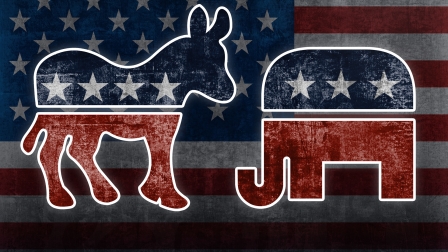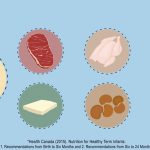Personas, polls and personalization: What’s behind the election of our lives?
Columnist Kevin Lindsay discusses the data-driven marketing that’s steering the election and explains why brands and campaigns need to dig deeper and bring people closer to conversion.

If you’re a fan of “House of Cards,” you know what a plot twist Pollyhop was in season four (and if you’re not caught up, SPOILER ALERT!). This powerhouse search engine has been central to challenger Will Conway’s success. With the help of a data scientist, Conway’s been recovering data from the search engine to target voters with unparalleled — and undoubtedly illegal — precision.
Thanks to the data, Conway and his campaign crew can see exactly who individual voters are, plus glean vital information on what the country is looking for in a candidate. Armed with that intel he can, essentially, be everything to everyone with unwavering precision.
We’re (hopefully) nowhere near the creepiness level of Pollyhop. Still, data has become a major focal point of the 2016 presidential race.
While I’m endlessly intrigued by the heated debates — and even the not-so-presidential mudslinging that’s happening — I’m equally amazed by the sheer level of data-driven marketing that’s steering this unwieldy ship. It’s not Pollyhop, but it’s still really cool (and, hopefully, more legal).
The benefits and challenges of samples
Do a quick search, and you can find a poll, sample, heat map or scatter plot that tells any story you want. Earlier in the cycle, this post had Ben Carson winning the nomination and the general election. This one had Jeb Bush besting everyone. THIS poll says a Chipotle Burrito or Captain Crunch could beat Trump.
What does that say about the predictive quality of data and sampling?
This is an optimization reality in every space, not just politics. Whether it’s samples for campaigns or an e-commerce site, what’s the significance of those numbers? And what level of statistical confidence and power comes with them?
When we talk about optimization, we’re talking about customers, voters, ticket buyers… the list goes on. Some brands have traffic that’s so massive they couldn’t possibly wrap their arms around each person and their unique aspirations and objectives.
So you create segments and robust personas. Armed with those, you assign values, deliver experiences and curate journeys that pull the masses closer to conversion.
Some brands do it well. Apple is so massive that they can’t dole out analytics for every song, podcast and audiobook on iTunes, so they pick and choose a sample. It works well, in general.
Other brands (and politicians) don’t. And that can leave us wondering if Captain Crunch will really be our next president…
Why a moment in time doesn’t (usually) matter
And let’s not forget that consumers’ real-time circumstances, needs and end goals change often.
If my company closes, I’ll be more focused on job creation when I cast my vote. If I bump up an income bracket, that flat tax starts sounding pretty good. Needs and wants change, and with them, so do our organic paths to purchase.
This is why, from an optimization perspective, it’s essential to be on, optimizing and automating 24/7. We can’t put all of our eggs in any data-driven basket that represents a single moment in time — I had a job (August 18, 2016), I was this bracket last month, and now things are different.
That moment in time no longer matters — now, this one does. That’s why Americans can’t throw up their hands, because “the polls say… ” Being truly data-driven means being consistent, constant and real-time. Not a moment in time.
Why it’s more than red button vs. blue button
But there’s one more piece to it all: testing. On political sites, campaign managers use the data to shore up support (and ideally, a few bucks). That’s their conversion benchmark. For businesses, it’s not that far off: who’s shopping, who’s buying, and what their carts look like, for example.
Then, the testing and optimizing begins, and it’s two images or three, this testimonial or that one, a big “Show Your Support!” callout or a slightly bigger one. It’s all well and good, but it really doesn’t matter. And I’m a testing zealot.
Campaigns and brands need to dig much deeper than red versus blue (pun intended). Respected outlets like Real Clear Politics declared the likelihood of a Bush/Clinton 2016 showdown a long time ago, and countless decisions were made based on that A/B test.
The red button or the blue button — How did seemingly having those two options impact the earliest days of the election and even pre-election period? What funds were spent, what polls were launched, and what committees were formed as a result — and possibly, that matchup alone, at least for a while?
Was the yellow button — the Trump button, let’s say — even on the radar? Should it have been? Data has unparalleled power when it’s used effectively — but a red vs. blue, A vs. B or big vs. small banner doesn’t matter much when the stakes are this high.
Full disclosure: I live in California, but I’m Canadian. So while I can’t get enough of the election coverage, I also can’t vote. But this gives me a unique perspective on it all, and from where I sit, the numbers have never mattered more.
What politicians (and brands) need to do is simple: Focus on the full journey, what “conversion” means today and the differences between data and its predictive values. When you do, the entire landscape changes as we watch and wait for voters to move one of the most important needles ever.
Some opinions expressed in this article may be those of a guest author and not necessarily Marketing Land. Staff authors are listed here.
Marketing Land – Internet Marketing News, Strategies & Tips
(33)














